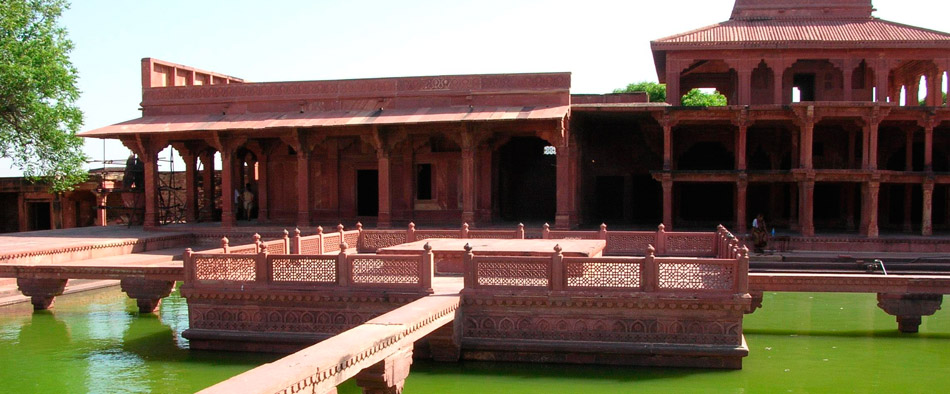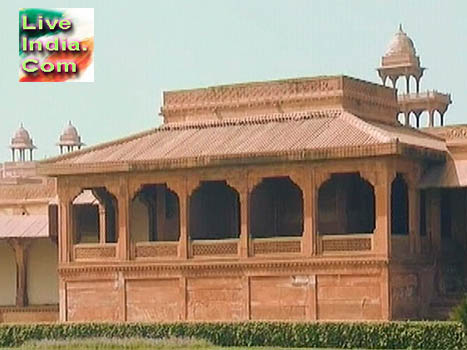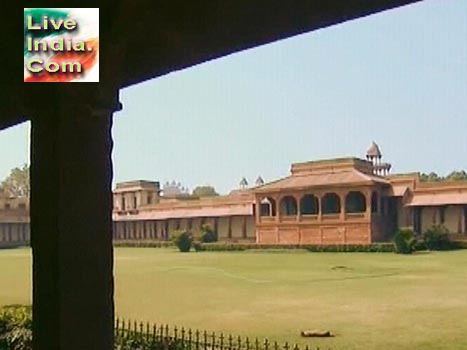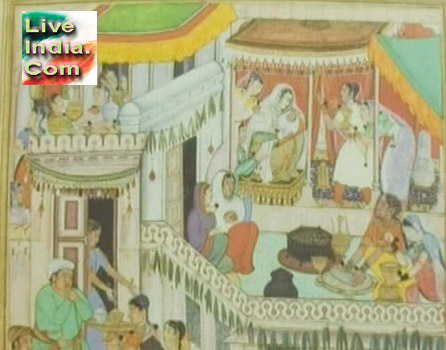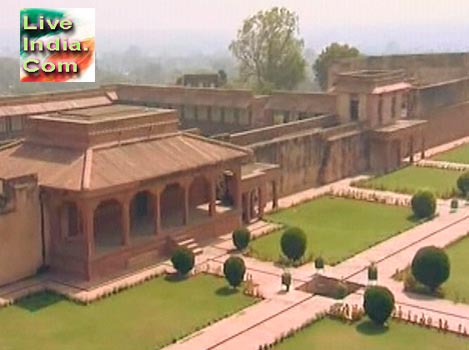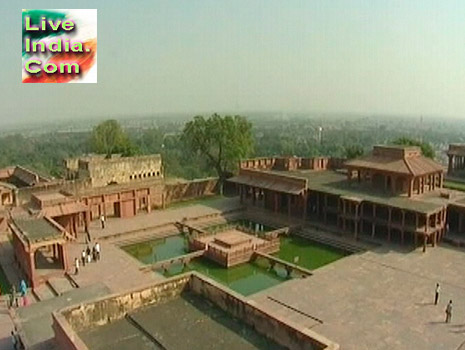| Diwan-I-Aam Fatehpur
Sikri
As one enters Sikri from
the Agra Gate, one of the nine gateways on the way to the palace complex,
Diwani-I-Aam, or the hall of public audience appears first. It is a huge
rectangular walled-in courtyard where petitions were heard, proclamations
made, embassies received and entertainment programs held. The royal balcony,
set within a frame of jail screens, appears on the western front. In front
of the royal seat, a stone hook is still found embedded in the ground.
As per tradition, Akbar's pet elephant Hiran was tied to this hook to crush
to death under its feet the head of the guilty. If it refused to obey thrice,
the victim was freed.
Resplendent in the aura
of grandeur, which comes naturally from the red sand stones which are the
basic construction materials used for the entirety of the complex, Fatehpur
Sikri has always been one of the greatest tourist attractions of Uttar
Pradesh. This ancient capital of Emperor Akbar is even today, one of the
highlights for tourists planning Tours to Uttar Pradesh. Located in the
heart of this ancient city is the Diwan-I-Aam, Fatehpur Sikri, one of the
most important Monuments in Fatehpur Sikri.
|
|
Built as a form of homage
to the memory of the memory of the great Sufi saint, Sheikh Salim Chisti,
who, it is said, blessed the emperor with an heir to the Mughal throne
in India, who was to be later known as Jahangir, Fatehpur Sikri was built
in 1571 and stood as the capital of the Mughal empire till the year 1585.
Finding its name in the prestigious list of heritage monuments as laid
down by the renowned organization, UNESCO, Fatehpur Sikri is today one
of the greatest prides of Indian culture. Perhaps, no other monument in
Fatehpur Sikri can take credit for this honor as can the Diwan-I-Aam, Fatehpur
Sikri.
Throwing light on the
social system, which existed during the Mughal period, a trip to Fatehpur
Sikri also reveals the intricacies of the Mughal system of governance.
Perhaps nothing reflects the workings of that ancient age as well as does
the Diwan-I-Aam in Fatehpur Sikri. Roughly translated as the hall for public
audience, the Diwan-I-Aam, Fatehpur Sikri is the durbar or hall where Emperor
Akbar interacted with his subjects on a one to one basis. |
Surrounded, by roads which
were probably once lined with shops and stalls of a bustling capital city
of the mighty Mughals, the entirety of the stretch of the roads in and
around the Diwan-I-Aam in Fatehpur Sikri, today take us back to the age
of its golden past. A stark contrast to the ornate decoration of the Diwan-i-Khas
in Fatehpur Sikri, the simplicity of the Diwan-I-Aam, Fatehpur Sikri shows
us another side of the emperor, in which we find shades of the benevolent
despot as well as the broad minded ness which gave birth to the beautiful
principles of Din I Ilahi, the religion which Emperor Akbar had founded
and popularized. |
